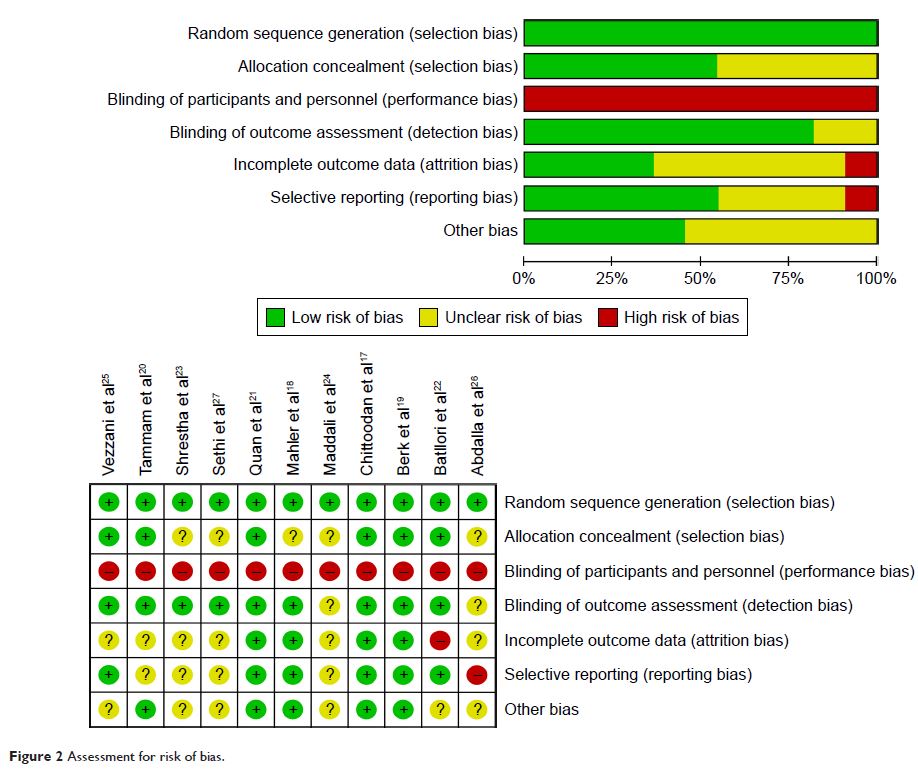9 0 5 7 8
论文已发表
注册即可获取德孚的最新动态
IF 收录期刊
- 2.6 Breast Cancer (Dove Med Press)
- 3.9 Clin Epidemiol
- 3.3 Cancer Manag Res
- 3.9 Infect Drug Resist
- 3.6 Clin Interv Aging
- 4.8 Drug Des Dev Ther
- 2.8 Int J Chronic Obstr
- 8.0 Int J Nanomed
- 2.3 Int J Women's Health
- 3.2 Neuropsych Dis Treat
- 4.0 OncoTargets Ther
- 2.2 Patient Prefer Adher
- 2.8 Ther Clin Risk Manag
- 2.7 J Pain Res
- 3.3 Diabet Metab Synd Ob
- 4.3 Psychol Res Behav Ma
- 3.4 Nat Sci Sleep
- 1.9 Pharmgenomics Pers Med
- 3.5 Risk Manag Healthc Policy
- 4.5 J Inflamm Res
- 2.3 Int J Gen Med
- 4.1 J Hepatocell Carcinoma
- 3.2 J Asthma Allergy
- 2.3 Clin Cosmet Investig Dermatol
- 3.3 J Multidiscip Healthc

超声引导下血管导管插入术的长轴/面内和短轴/面外方法的比较:更新的荟萃分析和试验序贯分析
Authors Liu C, Mao Z, Kang HJ, Hu X, Jiang S, Hu P, Hu J, Zhou F
Received 29 September 2017
Accepted for publication 19 December 2017
Published 20 February 2018 Volume 2018:14 Pages 331—340
DOI https://doi.org/10.2147/TCRM.S152908
Checked for plagiarism Yes
Review by Single-blind
Peer reviewers approved by Dr Hoa Le
Peer reviewer comments 2
Editor who approved publication: Professor Deyun Wang
Background: A long-axis in-plane (LA-IP) approach and a short-axis out-of-plane
(SA-OOP) approach are the two main approaches used in ultrasound (US)-guided
vascular catheterization. However, the efficacy and safety of these approaches
remain controversial. Therefore, we performed this meta-analysis to compare the
two techniques in vascular catheterization.
Materials and methods: Relevant studies were searched in PubMed,
Embase, and the Cochrane Library databases from database inception until August
2017. Randomized controlled trials comparing a long-axis approach with a
short-axis approach for US-guided vascular cannulation were selected. The
RevMan software was used to analyze the results, and trial sequential analysis
(TSA) was further applied to determine whether the currently available evidence
was sufficient and conclusive.
Results: Eleven studies met the inclusion criteria.
Overall, 1,210 patients were included. The total success rate was similar
between the SA-OOP and LA-IP approaches for US-guided vascular catheterization
(risk ratio [RR], 1.01; 95% CI, 0.99–1.04; P =0.35; I 2=48%). In the
radial artery (RA; RR, 1.00; 95% CI, 0.96–1.05; P =0.88; I 2=49%) and
internal jugular vein (IJV; RR, 1.00; 95% CI, 0.98–1.02; P =0.99; I 2=0%) subgroups,
the total success rate was also similar and was confirmed by the TSA. For
populations with subclavian vein (SCV) and axillary vein catheterization, the
SA-OOP approach showed a benefit for first-attempt success rate. No significant
differences in first-attempt success rate, cannulation times, or complications
were found between the two approaches.
Conclusion: Despite a similar total success rate between the
SA-OOP approach and the LA-IP approach when used for RA and IJV catheterization
(as confirmed by TSA), further robust well-designed trials are warranted to
evaluate other outcomes. There is insufficient evidence to definitively state
that the SA-OOP approach was superior to the LA-IP approach when used for SCV
and axillary vein catheterization. High-quality trials are needed to confirm or
refute this finding.
Keywords: ultrasound
guidance, long-axis in-plane, short-axis out-of-plane, vascular
catheterization, radial artery, internal jugular vein
